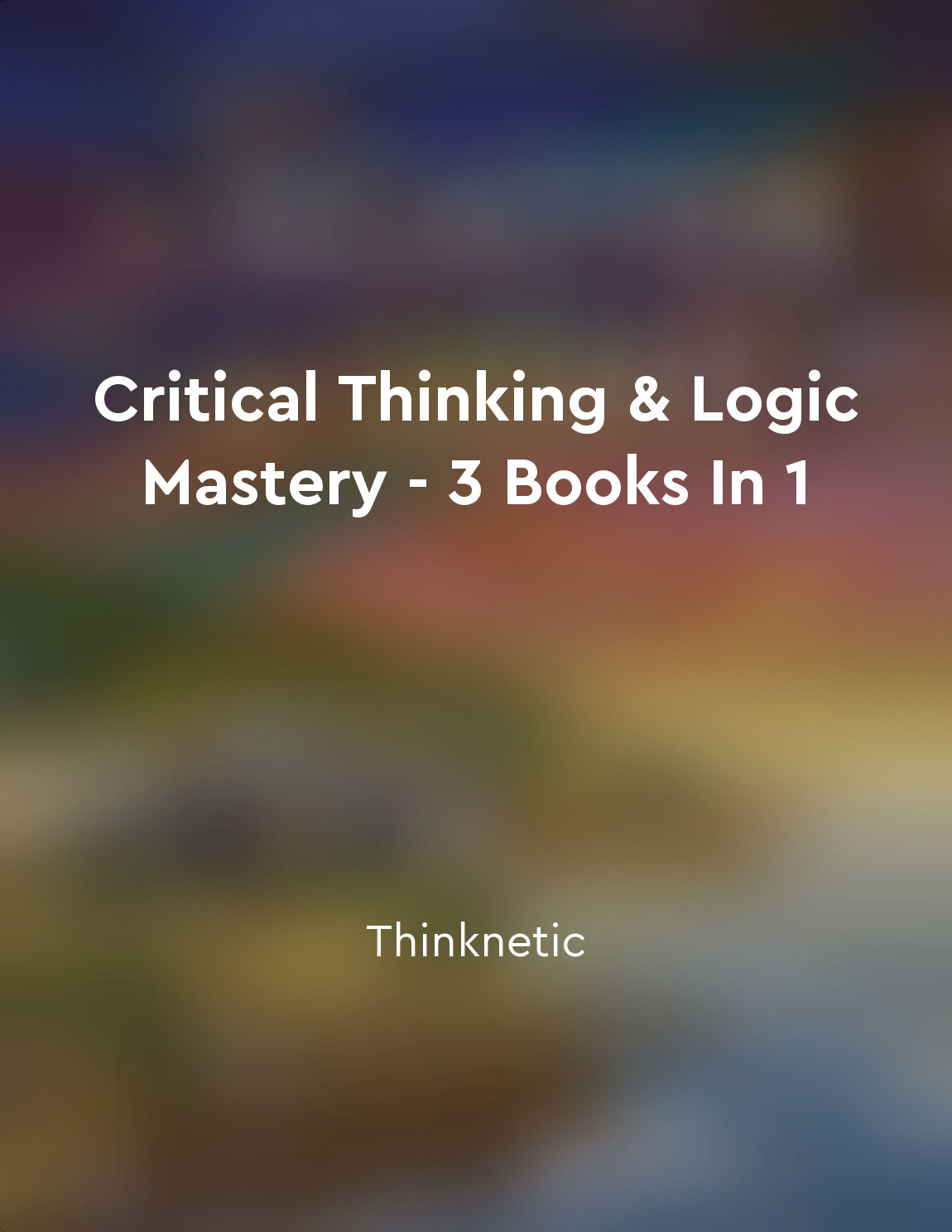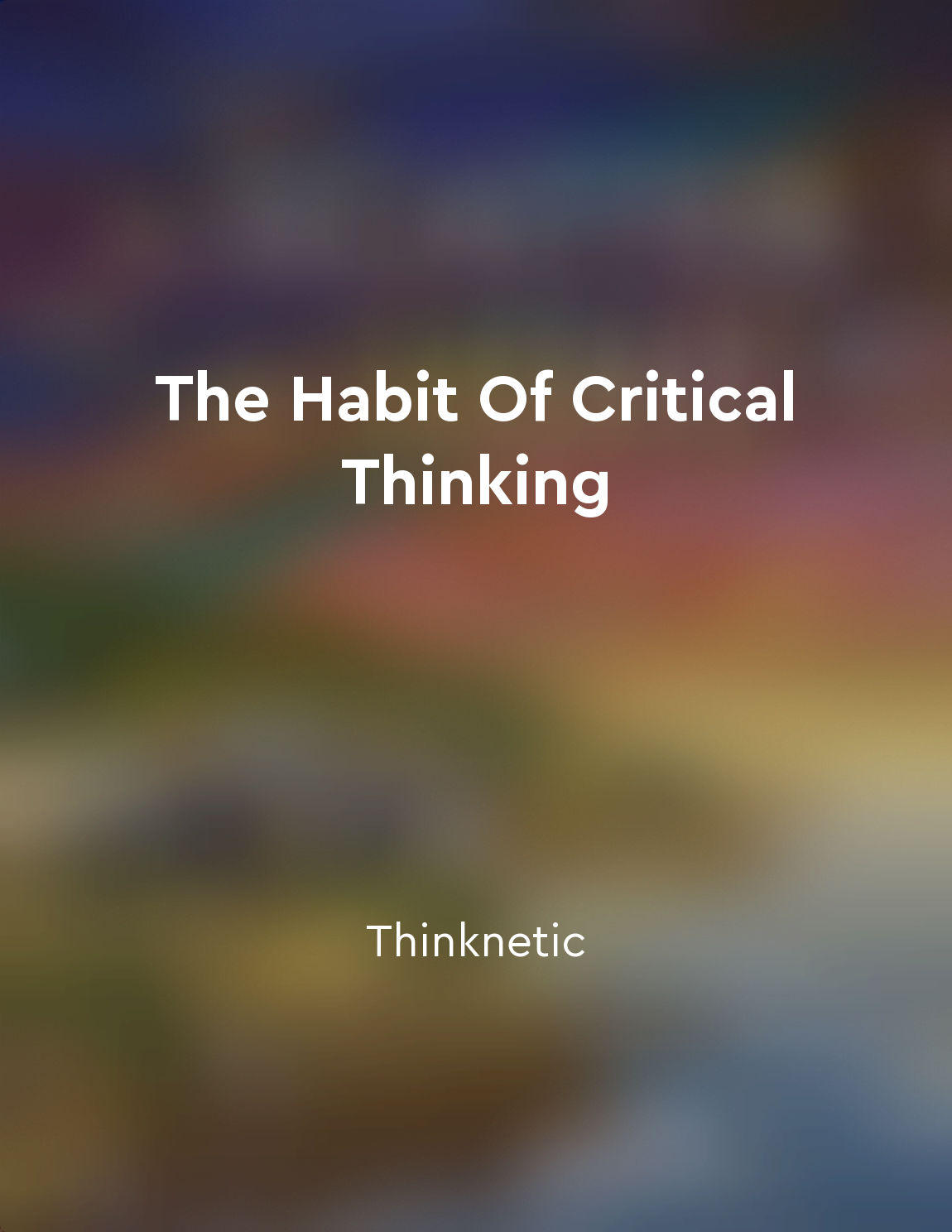Each hat allows focusing on a specific aspect from "summary" of Six Thinking Hats by Edward De Bono
The concept of the Six Thinking Hats is a simple yet powerful one. Each hat represents a different mode of thinking, allowing individuals to focus on a specific aspect of a problem or situation. By wearing a particular hat, a person can adopt a particular perspective and approach to the matter at hand. The White Hat, for example, is all about facts and information - it requires the thinker to consider what data is available, what is missing, and what additional information is needed. This mode of thinking is clear and analytical, focusing solely on the objective facts of the situation. On the other hand, the Red Hat encourages emotional thinking. It allows individuals to express their feelings, intuitions, and gut reactions without the need for justification or reasoning. This hat is all about tapping into one's emotions and instincts, providing a valuable perspective that may be overlooked when focusing solely on logic. The Black Hat, in contrast, is the critical thinker. This hat is all about identifying potential risks, weaknesses, and obstacles in a situation. By donning the Black Hat, individuals can analyze the potential downsides and pitfalls of a decision, helping to mitigate risks and make more informed choices. The Yellow Hat, on the other hand, is the optimistic thinker. This hat encourages individuals to focus on the potential benefits, opportunities, and positive outcomes of a decision. By looking at the bright side of things, individuals can generate new ideas and possibilities that may not have been considered otherwise. The Green Hat represents creativity and innovation. This mode of thinking is all about generating new ideas, solutions, and perspectives. By wearing the Green Hat, individuals can think outside the box, explore alternative options, and push the boundaries of conventional thinking. Finally, the Blue Hat is the organizer and facilitator. This hat is all about managing the thinking process, setting goals, and guiding the discussion. By wearing the Blue Hat, individuals can ensure that the thinking process is structured, productive, and focused on the task at hand.- The concept of the Six Thinking Hats provides a clear and systematic approach to problem-solving and decision-making. By utilizing each hat to focus on a specific aspect of a situation, individuals can broaden their thinking, consider different perspectives, and make more well-rounded and informed decisions.
Similar Posts

Beware of blind spots
Tim Harford warns us to be cautious of blind spots in our thinking and decision-making. Blind spots are areas in our understand...
Build a community of thinkers in the classroom
Creating a community of thinkers in the classroom is essential for fostering a culture of active, engaged learning. When studen...
Be willing to learn from others
If you want to become a more effective leader, you must be open to learning from others. This means being willing to set aside ...
Set clear goals
In order to achieve success in any endeavor, it is crucial to establish clear and specific goals. Setting clear goals provides ...

Logical reasoning is a tool for evaluating complex issues
Logical reasoning serves as a powerful tool when it comes to analyzing intricate problems that require careful consideration. I...
Encouraging a spirit of curiosity and exploration in all aspects of life
To truly excel in today’s rapidly changing world, individuals must cultivate a sense of curiosity and a willingness to explore ...

Practicing good communication skills is essential
Effective communication is a critical skill that every successful student must possess. It is not enough to simply understand t...

Share your expertise generously
To be recognized as a thought leader in your field, it's essential to share your expertise generously. This means going beyond ...

Stay objective
To stay objective means to approach a situation or issue without being influenced by personal feelings, biases, or opinions. It...
Embrace the power of mistakes
Mistakes are not to be avoided, but rather embraced. They are not signs of failure or incompetence, but rather opportunities fo...


